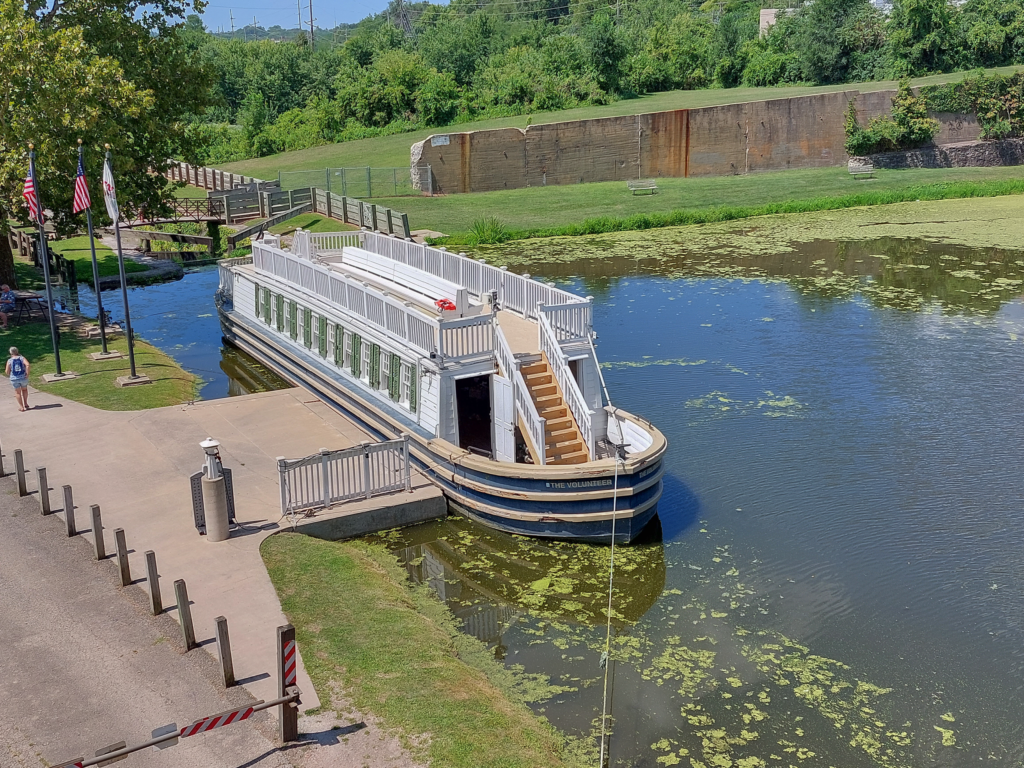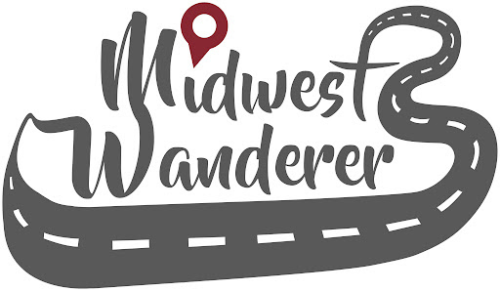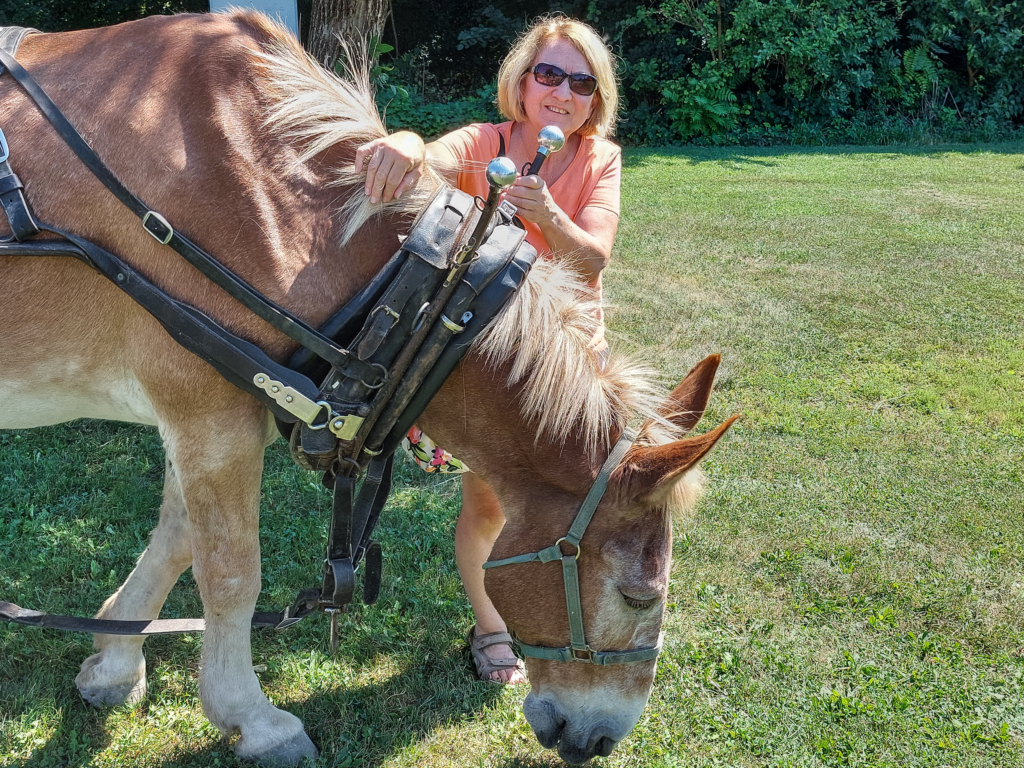Step back in time, to around 1850, and experience a ride on the Illinois and Michigan Canal Boat. Located in LaSalle, Illinois, a mule powers the boat. Yes, a mule, that walks along a towpath alongside the I&M canal.

What is the Illinois and Michigan Canal?
The Illinois and Michigan Canal, also known as the I&M Canal, is a hand-dug water channel that connected the Great Lakes with the Gulf of Mexico in the 1800s, opening the opportunity for increased trade from the East Coast, through the Midwest, to the South.
I&M Canal History
The idea of a canal was first explored in the 1670s during the Marquette and Joliet Mississippi River exploration. However, the French didn’t get around to digging the canal before they lost the territory to the British.
Fast forward a hundred and fifty years, and now New York’s Erie Canal is completed, connecting the Atlantic Ocean with the Great Lakes. The I&M Canal would connect the Great Lakes to the Illinois River, which empties into the Mississippi River. Goods from New York could then travel via water all the way to the Gulf of Mexico.
Fun Fact
When Illinois was admitted as a state in 1818, the northern border was raised from what had been proposed in order to keep the I&M Canal in a single state. Had the border not changed, part of Chicago would be in Wisconsin today.
Cities Along the Canal Grow
Commissioners platted towns along the canal route, including Chicago, Lockport, Morris, Ottawa, and LaSalle. They sold lots in these towns to finance the canal and spur development. Chicago’s population grew from 4,000 to 30,000 in the decade following the canal’s opening.
Building the I&M Canal
Digging of the canal began in July 1836. However, the nation’s 1837 depression interrupted the work. Work resumed in 1845 with the help of $1.6 million from investors, many of whom were from Europe. The canal was dug completely by hand, mostly by Irish immigrants, and opened in 1848.
How Boats Navigated the Canal
Mules pulled the boats through the canal, walking along a towpath that paralleled the canal. “Mule drivers,” usually young men, led the mules.
Fun Fact
The I&M Canal’s most famous mule driver was Wild Bill Hickok, known then by his birth name, James Butler Hickok.
Booming Canal Boat Business Boosted Area Business
Farmers shipped corn and wheat on canal boats to Chicago and to cities farther east. Increased trade prompted the establishment of the Chicago Board of Trade. Goods were transported from New York to New Orleans and vice versa. Once through the canal from Lake Michigan to the Illinois River, steamboats traveled the remaining route, down the Illinois and Mississippi Rivers.
Passenger boats were separate from freight boats, and passenger traffic boomed for several years. However, by 1852, trains took most of the passenger traffic, and passenger boats ceased to operate. Freight traffic continued to operate, however, since it was more cost effective than shipping by railroad at that time.
Fun Fact
During the canal’s inaugural year, Abraham Lincoln, his wife Mary and two children rode a canal boat from Chicago to LaSalle, Illinois, where they transferred to a steamboat headed to Peoria.
The End of the I&M Canal
As the railroad industry grew, canal traffic decreased. In 1900, the larger Chicago Sanitary and Ship Canal opened, further decreasing I&M Canal traffic. The I&M Canal survived another three decades, but closed in 1933.
I&M History Kept Alive
The I&M Canal was designated a National Historic Landmark in 1963, and the State of Illinois created the I&M State Trail in 1973. In 1984 President Ronald Reagan signed legislation creating the Illinois & Michigan Canal National Heritage Corridor, America’s first national heritage area.
Riding the Illinois and Michigan Canal Boat Today
Canal boats run from late May through October. Purchase tickets at the I&M Canal Visitor Center and Lock 16 Café and Gift Shop, a short walk from the boat.
Prior to your ride on the canal boat, you’ll gather on bleachers, where you’ll meet Moe the Mule (and pet him, if you’d like) and chat with the mule tender. The narrated boat ride runs 60 to 90 minutes. Visit the website for admission rates and other information.
*****


i saw this place when we were driving headed to Starved Rock State Park . A good place to hang out when visiting this area.